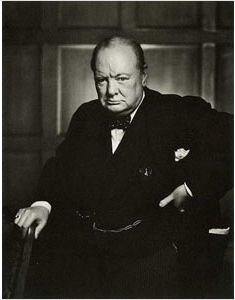Freedom of the Borough


Please note that this text is an extract from a reference work written in 1990. As a result, some of the content may not reflect recent research, changes and events.
The following ‘persons of distinction, and persons who have, in the opinion of the council, rendered eminent service to the borough’, have been awarded the Honorary Freedom of the Borough of Brighton by Brighton Council:
i) Field Marshal Rt Hon. Viscount Wolseley (19 November 1898): commander-in-chief of the British Army, and leader of the Nile River Expedition of 1884-5.
ii) General Sir John French (14 January 1903): later the Earl of Ypres; cavalry commander in the Boer War.
iii) Field Marshal Rt Hon. Earl Haig (30 November 1920): commander-in-chief on the western front 1915-8, to whom a statue has been erected in Whitehall, London.
iv) Admiral of the Fleet Rt Hon. Earl Beatty (7 October 1922): commander-in-chief of the Grand Fleet and First Sea Lord, to whom there is a bust in Trafalgar Square, London; the Admiral inaugurated the Brighton War Memorial on the same day.
v) Alderman Sir Charles Thomas-Stanford, J.P. (30 July 1925): former mayor and M.P. for Brighton, who bequeathed Preston Manor to the town.
vi) Lady Ellen Thomas-Stanford (30 July 1925): wife of Sir Charles above.
vii) Alderman Herbert Carden, J.P. (28 October 1926): former mayor and municipal visionary who was much involved in corporation land purchase and housing (see “Carden, Sir Herbert”).
viii) Benjamin James Saunders, C.B.E., J.P. (23 September 1937): did much to promote children’s sport and was chairman of the local employment committee; also presented land at Hollingbury to the town, and financially contributed to the development of the PrestonPark cycling track.
ix) The Royal Sussex Regiment (27 October 1944): formed in 1804, much involved in the Egyptian and Nile River campaigns, the Boer War, and the two World Wars; on 31 December 1966 the Royal Sussex was absorbed by the Queen’s Regiment which has been allowed to continue the ‘Freedom of Entry to the Borough’; they may march through the town with bayonets fixed, drums beating, and colours flying {123}.
x) Rt Hon. Sir Winston Spencer Churchill, M.P. (3 October 1947): statesman for many years and prime minister during the Second World War, to whom a statue has been erected in Parliament Square, London.
xi) Alderman Hugh Milner Black (30 September 1948): councillor since 1902 and former mayor; a council visionary who was much involved in corporation housing and education.
xii) Alderman Miss Dorothy Stringer (19 December 1968): former mayor; councillor since 1933; member of the education committee since the 1920s.
xiii) William Dodd (27 July 1972): deputy town clerk from 1938 until 1953; town clerk from 1953 until 1972.
Any numerical cross-references in the text above refer to resources in the Sources and Bibliography section of the Encyclopaedia of Brighton by Tim Carder.
The following resource(s) is quoted as a general source for the information above: {123,126,310}




Comments about this page
When I was a kid in the 1950s I met Dorothy Stringer. Some of us kids were invited to the Mayors party at the Dome, and I was one of them. It was quite overwhelming as there seemed to be hundreds of kids there. Mick Peirson
Alderman Hugh Milner Black was the father of the Pioneer Aviator Tom Campbell Black 1899-1936. Tom Black and C.W.A Scott won the great air race from London, Mildenhall to Melbourne, Australia in October 1934. Tom’s mother was Alice Jean nee McCullough daughter of Thomas McCullough, Warnambool, Victoria, Australia, my Great Uncle. For those interested I have set up a family web site dedicated to Tom Campbell Black. http://www.tomcampbellblack.150m.com
Dorothy Stringer was quite a lady. My Nan went to school with her and remained a life-long friend. She was really helpful to my Dad (Frede Barber) who was on the council in the early ’50s. Although they were on opposite sides of the political divide they were really quite close, and I remember Miss Stringer in my youth in her furs and finery in the congregation of St Bartholomew’s church where she attended regularly.
Add a comment about this page